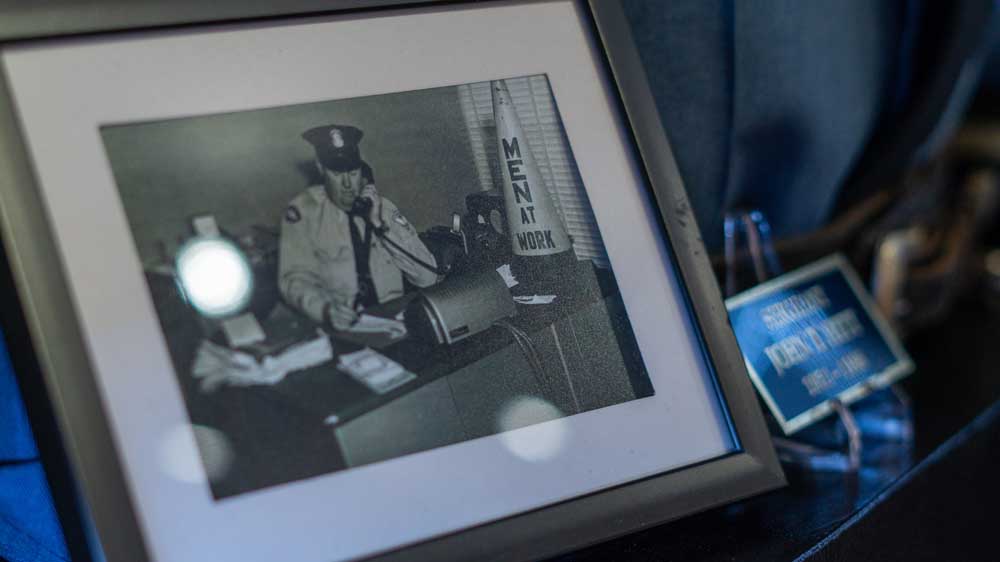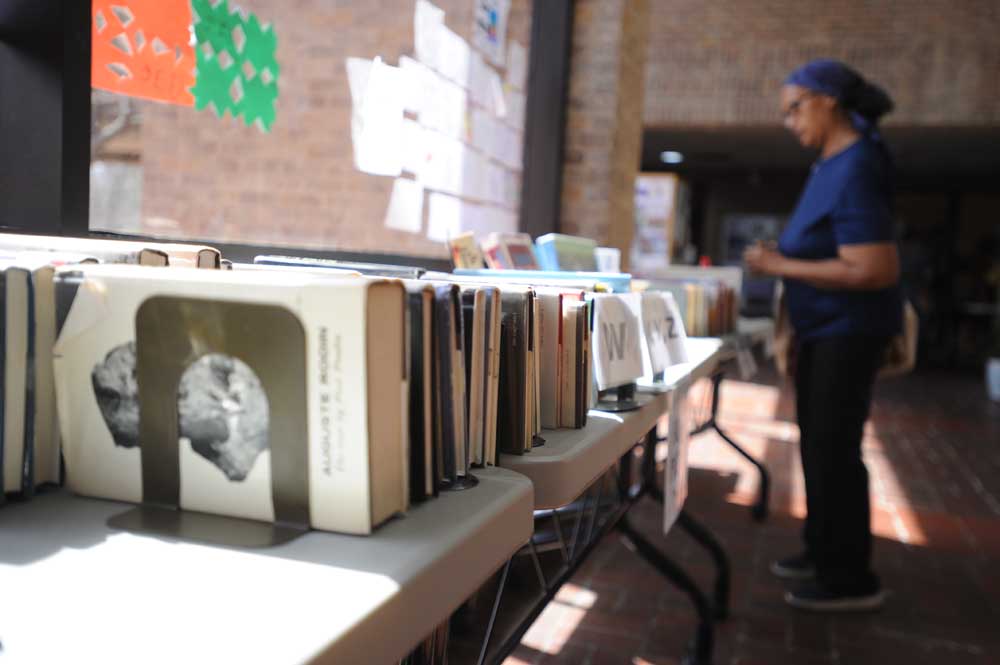New museum shares history of Tyler Police Department
Published 4:01 pm Monday, September 9, 2019

- Portrait of the late Sgt. John T Hitt at Tyler Police Department Historical Museum. JHONNIECE MEEKS/FREELANCE
Small handmade replicas of Tyler police cars dating back to the 1930s occupy a bottom shelf in the new Tyler Police Department Historical Museum. Other memorabilia is displayed elsewhere, including books containing police stories through the years such as an account of notorious outlaws Bonnie and Clyde hiding out in Tyler.
The department celebrated Monday the opening of the museum within an area of the police headquarters, 711 W. Ferguson St.
Police Chief Jimmy Toler said artifacts in the museum show where the department has come from as far as the level of equipment and uniforms and the advancements the department has made.
Items on display were gathered from closets at the department and from homes of police and other members of the police department family, according to Don Martin, public information officer.
The items include old hats, badges, an old mobile digital terminal that was in police cars in the 1980s, an old dispatch station, an old polygraph machine and ticket books that officers used to write on.
One display case contains a stamp machine that police stuck a card in when an officer was dispatched, when the officer arrived on the scene and again when the case was cleared. Much of the old equipment has been replaced with modern technology and computers.
Mannequins display different uniforms of police through the years and historic pictures line the walls. The handgun that belonged to police Chief Duncan Butler in the 1940s that has been passed down through the generations is displayed as well as a megaphone from the 1960s and other memorabilia.
A five-volume police department history recaps police stories and development.
Author Charles Steen, who was an officer from 1977 to October 1991, said, “Over the years after I left, I thought if someone ever writes a book on the history of the police department, I’m definitely going to buy the first copy. By 2010, still no one had written a history so I thought I’ll just write one.”
Titled “The History of the Tyler Police Department from 1865 to 2012,” the books tell a lot of police stories that would have been lost forever if Steen had not interviewed over 65 officers to obtain information they had.
For example, Steen interviewed the late officer Charlie Matthews, who was 94 at the time and related that the owner of an old house behind a service station near the intersection of Erwin Street and Old Henderson Highway was a friend of bank robbers Bonnie and Clyde. The outlaws stayed in the house when they came to Tyler and did not venture out until it was safe after dark.
“If I hadn’t talked with him, he would have taken those stories to the grave with him,” Steen said. “I was fortunate to talk to him.”
Saying the Tyler Police Department has a rich history, Steen said his research found that the old police station on Locust Street was originally built in the 1880s for Tyler Fire Department, but police wound up occupying the second floor.
“Believe it or not, at that time it was the tallest two-story building in the world until Tyler had it torn down in the 1950s,” Steen said. “The second floor was unusually tall.”
Tyler police cars were a plain black without markings just like any other black car on the streets until 1933, according to Steen’s history.
Chris Weir, who grew up in Tyler, was looking through the history in 2014 when he noticed pictures of different historic police cars and decided it would be neat to make 3D model replicas, starting with the first Tyler police car in 1933 that had on its sides a sticker of a shield based on the department’s badge.
“That was the year you could look at it (a car) and say, ‘That is a Tyler police car,’” Weir said.
Weir has always been interested in making 3D models of planes, ships and cars, but got hooked on the idea of creating authentic replicas of Tyler police cars from historic pictures of the cars. He made 16 miniature replicas of Tyler police cars from 1933 to the present.
In pursuing the project over a two-year period, Weir spent about as much time working on his computer as he did on his work bench. He customized the miniature cars and details to be specific to Tyler Police Department cars.
When making replicas, Weir said, “I try to be as authentic as possible and as realistic as possible to cover every detail and try not to make any compromises on accuracy.” He even matched license plates on his replicas of Tyler police cars with the number and style of the real police cars, reflecting changes the state has made in license plate design.
His entire row of replica Tyler police cars illustrates the overall evolution not only of the real police cars, but also of law enforcement and technology in them as well, Weir said.
Through the decades, he said, the display shows that emergency and law enforcement equipment has become more sophisticated with more lights, bigger cars, more sirens, bigger engine, bigger wheels, bigger wheels and more specialized.
Making the police car replicas was an opportunity to do something unique and has been “a true hometown connection,” said Weir, who now lives in Bossier City, Louisiana.
The display represents all in one place both the history of Tyler Police Department and its heritage, showing where the department started and where it is now, said Weir, describing himself as “an interested citizen.”
Until he started making replicas of police cars, Weir’s only connection with the Tyler Police Department was serving as a volunteer assisting with maintenance in the vehicle services section for a while and participating in the Citizen Police Academy in 1998.
Groups such as Boy Scouts and churches may schedule tours of the museum, Martin said.
TWITTER: @Tylerpaper







